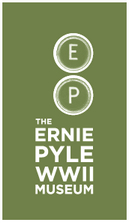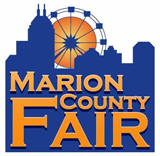Saturdays, noon to 1 p.m. ET on WICR 88.7 FM.
Or listen live from anywhere on WICR
Online!
June 27 show
YMCA heritage
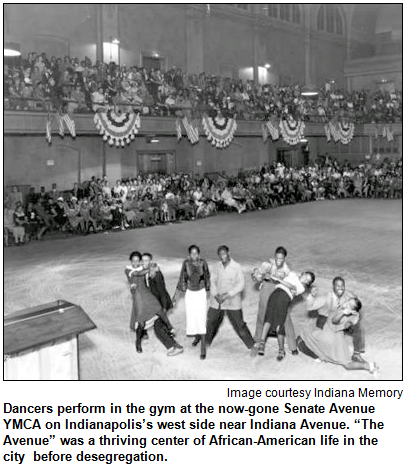 With a flurry of new YMCAs opening recently or anticipated soon in the Indianapolis area, it's easy to forget that the Y's roots stretch back more than 160 years in the Hoosier capital.
With a flurry of new YMCAs opening recently or anticipated soon in the Indianapolis area, it's easy to forget that the Y's roots stretch back more than 160 years in the Hoosier capital.
Amid the attention focused on new or expected YMCAs in the CityWay area of downtown Indy, the Avondale Meadows neighborhood long described as "struggling," Pike Township and even an unusual Indy Bike Hub YMCA, Hoosier History Live will explore the heritage of the Y in central Indiana and elsewhere in the state.
It's a story that begins in 1854 in the Hoosier capital, just 10 years after the first Y opened in England.
Early civic leaders involved in the YMCA included Eli Lilly and future U.S. president Benjamin Harrison.
Wealthy entrepreneur Madam Walker became an important supporter of the Senate Avenue YMCA, which opened in 1912 as the first Y for African-Americans in Indianapolis. (The building, now long demolished, was dedicated by Booker T. Washington.)
Nelson will be joined in studio by Eric Ellsworth, president and CEO of the YMCA of Greater Indianapolis, which includes YMCAs in Avon, Fishers and the former Fort Harrison.
Other guests will include Dr. Stanley Warren, the author of The Senate Avenue YMCA for African-American Men and Boys (Donning Company Publishers) and a retired college and high school history teacher. (Last year, Dr. Warren was a Hoosier History Live guest for a show about Attucks High School; he was a student and, later, a teacher at the school.)
 A potpourri of YMCA heritage facts:
A potpourri of YMCA heritage facts:
- In 1902, the first summer camp for boys in the Indy-based Y was held. The setting was the Lake Wawasee estate of J.K. Lilly, son of Eli and the then-president of the Y board in the Hoosier capital.
- In 1946, the YMCA purchased 103 acres on the Flatrock River and opened a summer camp there the next year.
- According to a recent story in The Indianapolis Star, the CityWay YMCA currently under construction will be 87,000 square feet. Among other features, it will have three full-sized basketball courts, a running track "with sweeping views of the city skyline," two swimming pools and a yoga studio. The $24 million health and fitness facility is expected to open in December in CityWay, which is on the south side of downtown Indy.
 In northern Indiana, Camp Tecumseh has become a beloved site, with a heritage of more than 90 years. Established in 1924 by the YMCA and northern Indiana residents, Camp Tecumseh is on the banks of the Tippecanoe River near the towns of Brookston and Delphi.
In northern Indiana, Camp Tecumseh has become a beloved site, with a heritage of more than 90 years. Established in 1924 by the YMCA and northern Indiana residents, Camp Tecumseh is on the banks of the Tippecanoe River near the towns of Brookston and Delphi.
 According to the camp's history, the name of Camp Tecumseh was suggested in the 1920s by an 11-year-old boy from the town of Battle Ground, Ind.; he wanted to honor the legendary Shawnee leader. Today, Camp Tecumseh is visited annually by more than 35,000 people for summer camps, field trips, meetings and retreats.
According to the camp's history, the name of Camp Tecumseh was suggested in the 1920s by an 11-year-old boy from the town of Battle Ground, Ind.; he wanted to honor the legendary Shawnee leader. Today, Camp Tecumseh is visited annually by more than 35,000 people for summer camps, field trips, meetings and retreats.
Some trivia about Camp Tecumseh: During the first summer, campers slept in tents. Subsequently, cabins were built during the mid-1920s; one of the original cabins remains as a historical monument. (In the early 1970s, summer campers included future movie and TV actor Greg Kinnear, a native of Logansport.)
In contrast to the rural setting of Camp Tecumseh, the Senate Avenue YMCA was in an urban part of downtown Indy. According to the book by our guest Dr. Warren, the idea for the Senate Avenue Y began in 1901 with a gathering of African Americans known as the Young Men's Prayer Band.
Although the Senate Avenue YMCA eventually was closed (as were its successor, the Fall Creek YMCA, and the massive Central YMCA, which had been a longtime landmark at West New York and North Illinois streets), several YMCAs have been opened since the 1990s or are planned for downtown Indy. They include a Y that opened in 1993 in the historic Athenaeum building.
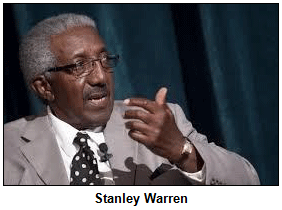 In the Indy suburbs, the Fishers Y opened in 2002 as the first all-new YMCA facility in the metro area in more than 40 years.
In the Indy suburbs, the Fishers Y opened in 2002 as the first all-new YMCA facility in the metro area in more than 40 years.
The CityWay Y under construction is expected to be the largest Y in central Indiana, both in size and membership. In addition to the pools, basketball courts, running track and yoga studio, it will include a teaching kitchen, a cycling studio and a working garden on the roof.
Learn more:
Roadtrip: Seven Pillars and Miami Nation of Indiana
Guest Roadtripper Andrea Neal, a teacher and writer, suggests we visit the Seven Pillars southeast of Peru in Miami County along the Mississinewa River. Seven limestone pillars jut from the water, creating the appearance of a cliff with rounded buttresses and alcoves. In the Miami language, this place is called aašipehkwa waawaalici, meaning "caves in the cliff," and continues to be a site of importance for the Miami Nation of Indiana, which owns a 37-acre parcel of land on the other side of the river.
To the extent Indiana is still "land of the Indians," the Seven Pillars formation is its spiritual center.
Since 1897, however, the Miami have been fighting to gain back their political identity. An administrative decision by assistant attorney general Willis Van Devanter - since conceded by the federal government to have been based on erroneous application of the law - cost the Miami of Indiana their status as a federally recognized tribe. They've tried almost every legal avenue to to get it back.
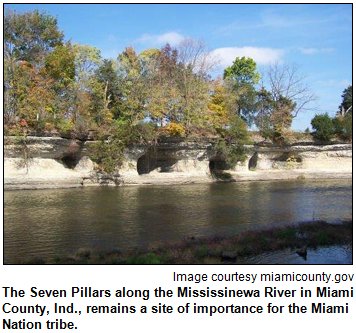 "We're not giving up," declares Chief Brian Buchanan. "Our people are as upset now as they were 100 years ago."
"We're not giving up," declares Chief Brian Buchanan. "Our people are as upset now as they were 100 years ago."
In 1978, the Department of the Interior set up a new process for acknowledging Indian tribes. The Miami applied for recognition but were denied on grounds there was a gap in proof of the existence of a continuous tribal community with functioning political system since the 1940s. The Miami challenged the ruling in court without success. They've also asked Congress for legislation restoring their tribal rights but so far have not found enough members of the Indiana delegation to champion the cause.
Buchanan says members will continue to do what they can through the political system to win back their tribal recognition. Just as important are the cultural activities that distinguish them as Native Americans. One recent effort has been to revive the dormant Miami language. Also, their annual powwow near Rockville gives the public a chance to experience native customs and music. As Indiana celebrates its bicentennial, the Miami want Hoosiers to know they are alive and well and dedicated to preserving their culture into the future.
The Seven Pillars is accessible to the public and is stewarded by Acres Land Trust. Here are the directions for getting to this landmark on foot, and please be respectful, as this is a sacred place.
You can also follow Andrea Neal"s "Indiana at 200" on social media at https://www.facebook.com/IndianaAt200 or at @IndianaAt200.
History Mystery
|
In 1894, the YMCA in Crawfordsville may have been the setting for a historic "first" in Indiana. That is, the first event of its kind in the state.
Recently, research by some historians has questioned the accuracy of this "first" claim in terms of Crawfordsville.
They contend the "first" may have happened at a YMCA in Indianapolis or Evansville. But for generations of Hoosiers, the Y in Crawfordsville has been associated with the historic "first" for Indiana that happened in 1894.
Question: What was it?
The call in phone number is (317) 788-3314, and please do not try to win the prize if you have won any prize from WICR during the past two months. Please do not call into the show until Nelson has posed the question on the air.
The prize pack includes a family 4-Pack to Conner Prairie, including four tickets for the 1859 Balloon Voyage, courtesy of Conner Prairie, as well as coupon for Bee Coffee Roasters, courtesy of Visit Indy.
Your Hoosier History Live! team,
Nelson Price, host and
creative director
Molly Head, producer, (317)
927-9101
Richard Sullivan, webmaster
and tech director
Pam Fraizer, graphic
designer
Garry Chilluffo, media+development director
Please tell our sponsors that you appreciate their support: B's Po Boy restaurant | Ernie Pyle WWII Museum | Indiana Historical Society | Lucas Oil | Marion County Fair | Story Inn.

 Acknowledgments to Monomedia, Visit Indy, WICR-FM, Fraizer Designs, Heritage Photo & Research Services, Derrick Lowhorn and many other individuals and organizations. We are an independently produced program and are self-supporting through organizational sponsorships and individual contributions. We do not receive any government funding. Visit our website to learn how you can support us financially. Also, see our Twitter feed and our Facebook page for regular updates.
Acknowledgments to Monomedia, Visit Indy, WICR-FM, Fraizer Designs, Heritage Photo & Research Services, Derrick Lowhorn and many other individuals and organizations. We are an independently produced program and are self-supporting through organizational sponsorships and individual contributions. We do not receive any government funding. Visit our website to learn how you can support us financially. Also, see our Twitter feed and our Facebook page for regular updates.
July 4 show
Colorful Indiana-born baseball players
A Hoosier from Michigan City pitched the only "perfect game" in a World Series. Another major league baseball player from Indiana, a superstar for the New York Yankees, wore a number on his uniform (23) that symbolized a family tragedy.
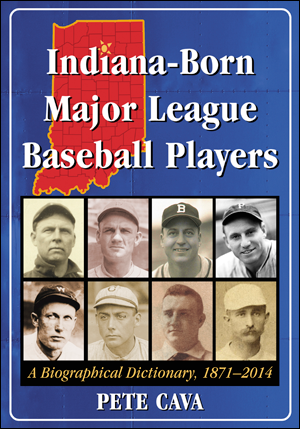 And an obscure infielder from South Bend was the answer to a trivia question posed in the popular Peanuts comic strip by Charles Schulz.
And an obscure infielder from South Bend was the answer to a trivia question posed in the popular Peanuts comic strip by Charles Schulz.
They are among the baseball figures whom we will explore when Nelson is joined by Indianapolis-based sports historian Pete Cava, the author of an upcoming, definitive book titled Indiana-Born Major League Baseball Players: A Biographical Dictionary, 1871-2014 (McFarland Publishing).
So many native Hoosiers have excelled in the major leagues (10 natives of Indiana are enshrined in the Baseball Hall of Fame in Cooperstown, N.Y.) that we can't cover all of the stars in a single show. Instead, we will focus on some of the most colorful anecdotes associated with pro baseball players during our program with Pete, who has had an extensive career writing about baseball and Olympic sports.
His new book, which will be published in the fall, includes an entry about Tommy John from Terre Haute, the former pitcher who underwent a pioneering type of elbow operation that ever since has been known by his name. "Tommy John surgery" has saved the careers of many pitchers, Pete notes.
The player whose uniform number symbolized a family tragedy was Evansville native Don Mattingly, who created a sensation with his stellar play as a Yankees first baseman during the 1980s.
Southern Indiana also was the home turf of a first baseman who Pete contends has been unfairly neglected by the Hall of Fame. Princeton native Gil Hodges (1924-1972) was a hard-hitting first baseman for the Brooklyn (and later Los Angeles) Dodgers. Then, Hodges managed the New York Mets to a shocking upset in the 1969 World Series. The team has gone down in history as the "Miracle Mets."
During the 1956 World Series, Michigan City native Don Larsen of the Yankees pitched a "perfect game" that, to this day, is the only one in the history of the World Series.
So who inspired the Peanuts trivia question? A shortstop named Ollie Bejma (1907-1995), a South Bend native who captivated spectators in the 1930s on a short-lived major league team from St. Paul, Minn. More than 35 years later, he was saluted in Peanuts by Schulz, a Minnesota native.
During our show, Pete also will share insights about an outfielder and manager in the early 1900s who committed suicide in French Lick. The unexpected death of Charles "Chick" Stahl, who killed himself in 1907, has been shrouded in mystery for more than a century. He grew up in Fort Wayne and played for - and managed - Boston-based teams.
Learn more:
© 2015 Hoosier History Live! All rights reserved.
Hoosier History Live!
P.O. Box 44393
Indianapolis, IN 46244
(317) 927-9101



